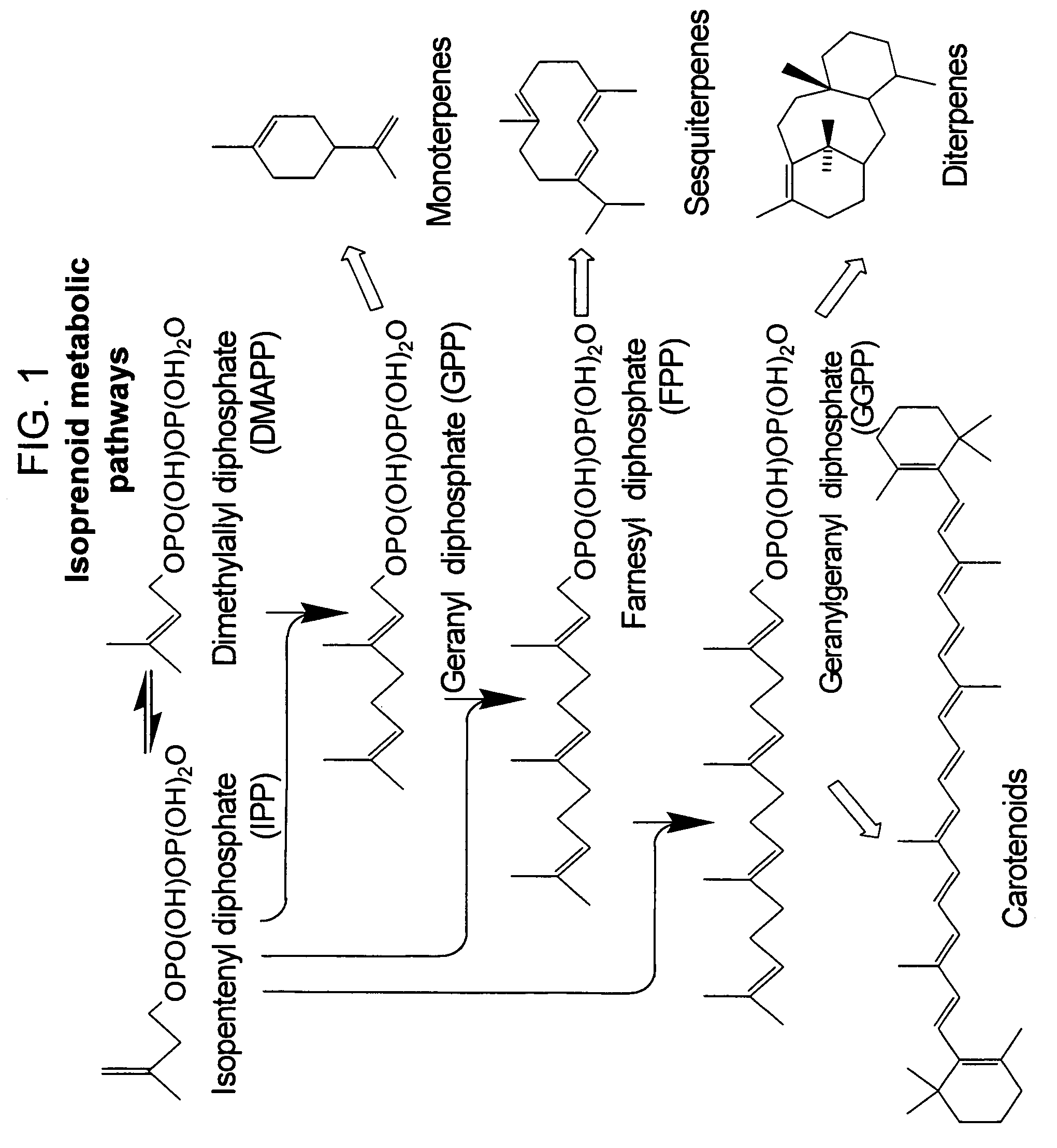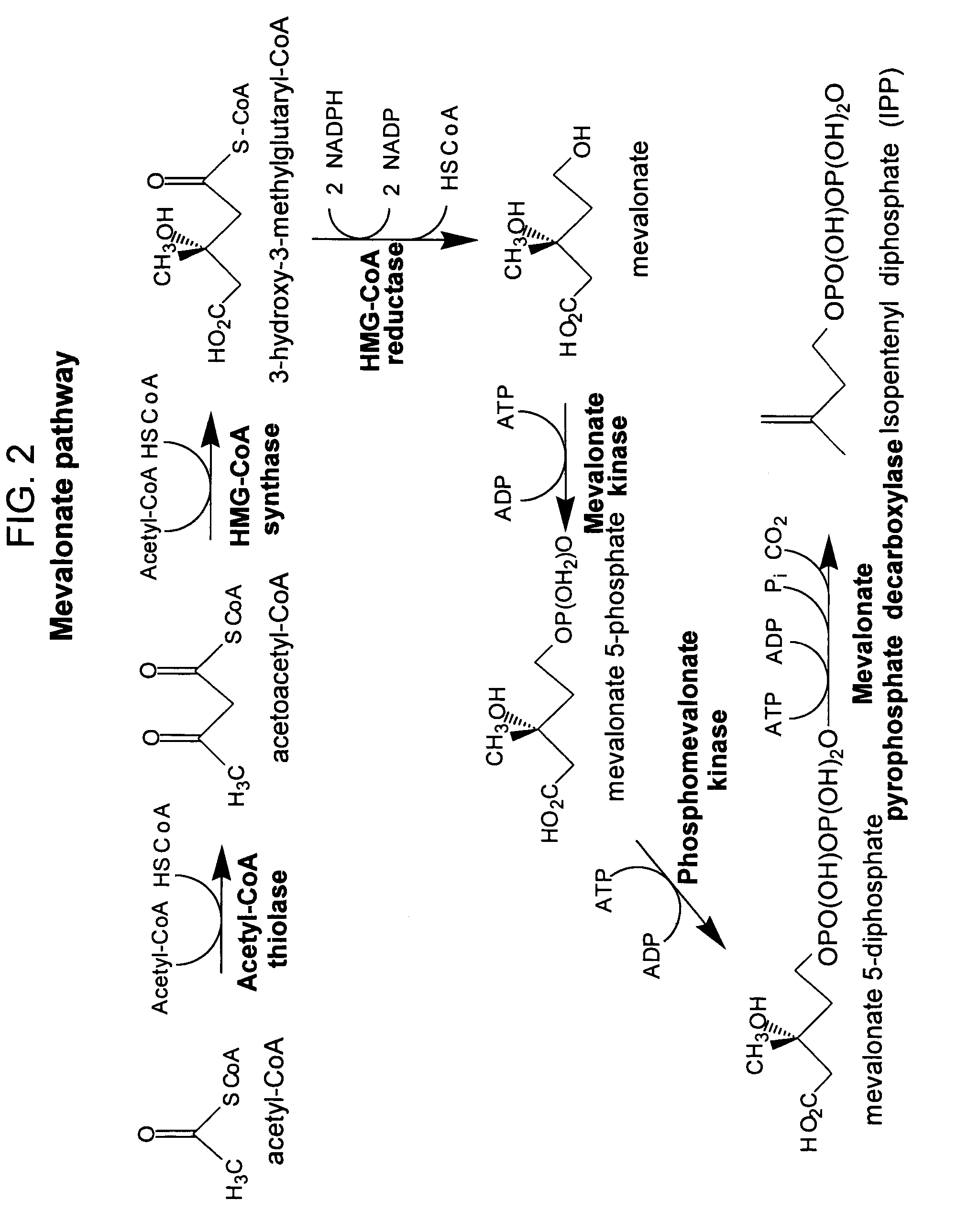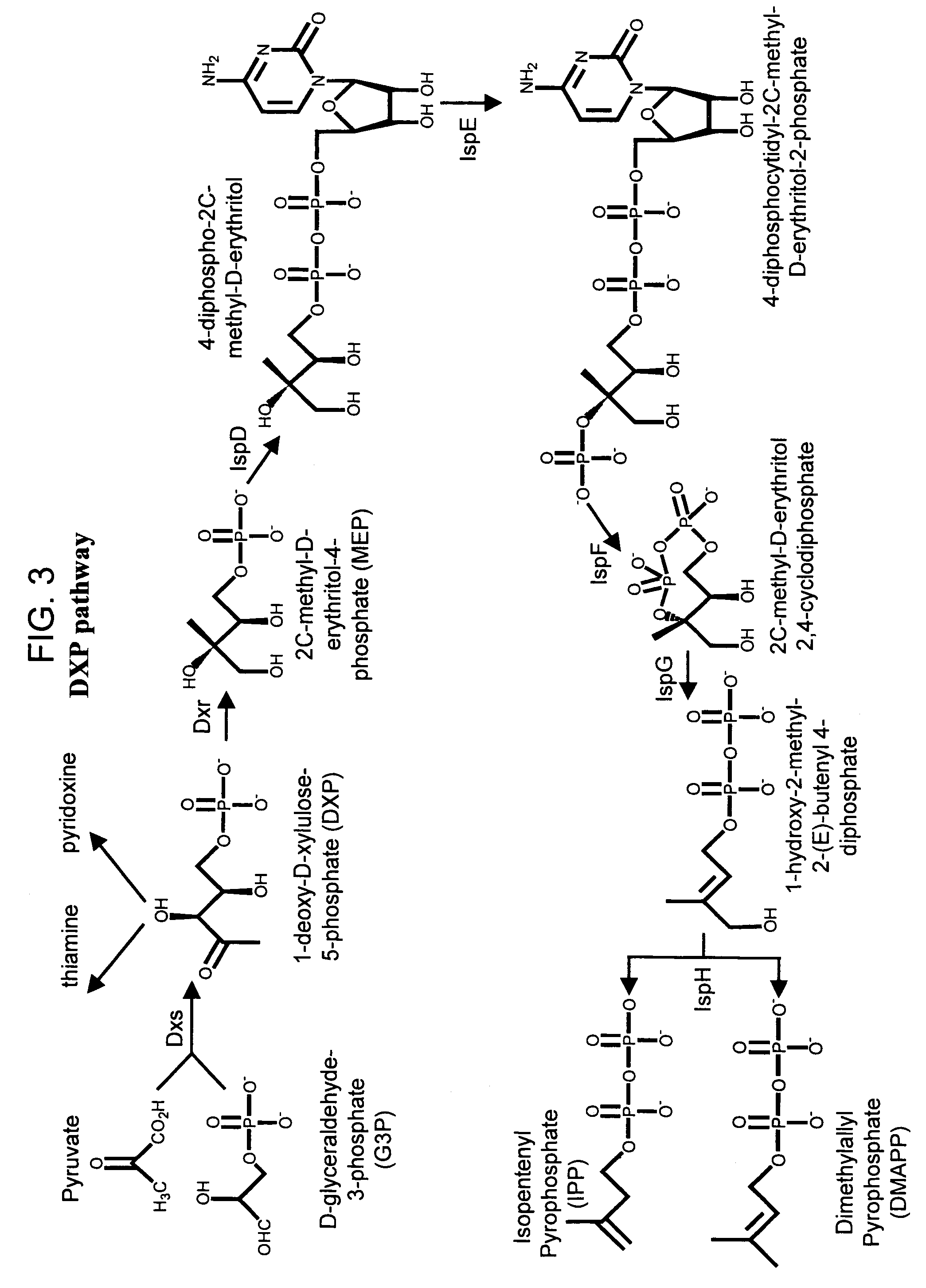Method for enhancing production of isoprenoid compounds
a technology of isoprenoid compounds and production methods, applied in the direction of oxidoreductases, biochemistry apparatus and processes, gene material ingredients, etc., can solve the problems of low yield, low cost, and inability to economically or impossible to synthesize, and achieve the effect of reducing the accumulation of hmg-coa in the intracellular cavity
- Summary
- Abstract
- Description
- Claims
- Application Information
AI Technical Summary
Benefits of technology
Problems solved by technology
Method used
Image
Examples
example 1
In vivo Production of Mevalonate Limits the Production of Amorphadiene
[0225]The following strains, vectors, growth conditions and analytical methods were used in the following examples.
Strains, Plasmid Construction, and Growth Media
Strains
[0226]E. coli strains TOP10 and DH10B, both from Invitrogen, were used for cloning and plasmid construction. E. coli DH10B was used for isoprenoid production, growth and metabolite assays.
Growth Media
[0227]For cloning and propagation of E. coli strains harboring the various recombinant vectors described herein, Luria broth with Miller's modification (Sigma-Aldrich) was used with appropriate antibiotics for plasmid selection. For production, growth and metabolite assays, engineered (“genetically modified” or “recombinant”) E. coli strains were grown in Luria broth with Miller's modification (LB), 1% (wt / vol) glycerol and appropriate antibiotics. DL-mevalonate used for media supplementation was prepared by mixing 1 volume of 2 M DL-mevalonic acid lac...
example 2
Increased Expression of the MevT Operon from Stronger Promoter Systems and Higher Copy Number Plasmid Vectors Results in Growth Inhibition
[0256]The following example demonstrates that the increased over-expression of the “top half” (acetoacetyl thiolase, HMGS, and HMGR) of the mevalonate pathway can lead to growth inhibition of the modified host cell.
[0257]To increase the in vivo production of mevalonate in E. coli, the MevT operon was transferred to expression systems that would give increased expression of the MevT genes. E. coli DH10B was transformed with the following MevT plasmids, listed in order of increasing expression: pMevT and pTrc99A (where both pMevT and pTrc99A were transformed into the same host cell), pBAD33MevT, and pBAD24MevT. In addition, the corresponding empty control plasmids were transformed into E. coli DH10B: pLac33 and pTrc99A (two plasmids in the same host), pBAD33, and pBAD24. pMevT and pLac33 were co-transformed with pTrc99A to control pMevT and pLac33's...
example 3
Increased Expression of HMGS Causes Growth Inhibition, but Increased Expression of HMGS and HMGR Together does not
[0261]The following example shows that the growth inhibition caused by increased expression of the top half of the mevalonate pathway, as discussed in Example 2, is due to the expression of HMGS, which catalyzes the production of HMG-CoA. Expression of HMGR, which catalyzes a reaction in which HMG-CoA is a reactant, along with HMGS, as provided by the methods of the present invention avoids this toxicity.
[0262]In order to determine the source of toxicity caused by the increased expression of the MevT operon, the individual genes of the MevT operon and combinations thereof were amplified and cloned into expression vectors. AtoB was amplified from pBAD24MevT using standard PCR protocols and primers complementary to the 5′ and 3′ ends of the gene. AtoB was cloned into the XmaI-SalI sites of pBAD33, low copy, arabinose inducible plasmid, by digesting both the empty vector an...
PUM
| Property | Measurement | Unit |
|---|---|---|
| temperature | aaaaa | aaaaa |
| temperature | aaaaa | aaaaa |
| temperature | aaaaa | aaaaa |
Abstract
Description
Claims
Application Information
 Login to View More
Login to View More - R&D
- Intellectual Property
- Life Sciences
- Materials
- Tech Scout
- Unparalleled Data Quality
- Higher Quality Content
- 60% Fewer Hallucinations
Browse by: Latest US Patents, China's latest patents, Technical Efficacy Thesaurus, Application Domain, Technology Topic, Popular Technical Reports.
© 2025 PatSnap. All rights reserved.Legal|Privacy policy|Modern Slavery Act Transparency Statement|Sitemap|About US| Contact US: help@patsnap.com



